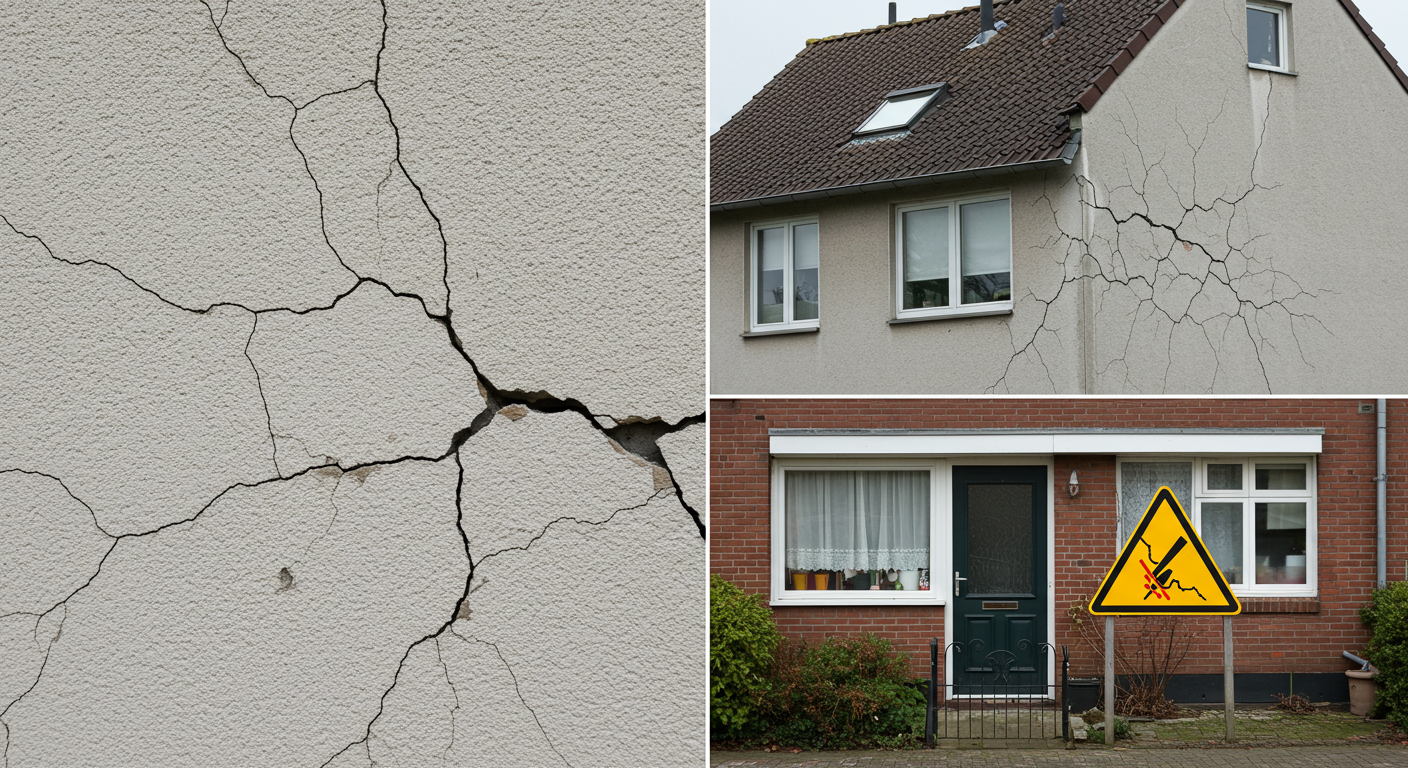(The following article was published in de Volkskrant (Opinion & Debate) on January 29, 2014)
The claim that the majority of the damage to houses in Groningen is not the result of earthquakes related to gas extraction, as argued by Bram van Weele (O&D, January 24), is completely unfounded and does not do justice to those affected, some of whom have suffered severe damage and are left with uninhabitable or unsellable homes.
Van Weele’s argument is music to the ears of NAM, which is already reluctant to compensate for earthquake damage caused by gas extraction. However, his argument has nothing to do with a proper analysis and assessment of individual damage cases.
As an expert, I have analyzed the damage to several buildings in Middelstum and Kantens and established the causality between this damage and earthquakes. In one case, it concerned a poorly executed renovation that caused serious subsidence in an extension. An earthquake then caused an additional crack. As an expert, you must conclude that only 5% to 10% of the damage is attributable to the earthquakes caused by gas extraction. In another case, it concerned a large Groningen farmhouse, whose front house had subsided considerably over more than a hundred years. Although the house was leaning, it was still perfectly habitable. However, a strong quake caused the ground under the house to collapse, resulting in an additional subsidence and tilt all at once.
Technically, the quake was responsible for half the tilt, but the damage caused by the quake, expressed in monetary terms, was at least 80% of the total damage. The other buildings studied showed damage percentages attributable to earthquakes between these cases.
The above examples apply to almost every case of damage, including those with other causes than earthquakes. My experience is that every building and every case of damage has its own history. Each case must therefore be studied individually, determining all contributing causes. This is usually done by considering all possibilities and eliminating those not applicable. Then one or more causes remain, and for each, the share of the total damage must be determined. This requires specialist knowledge and insight and usually technical calculations.
Minor damage to buildings occurs frequently in the Netherlands, not only in Groningen. This is the result of the naturally settlement-sensitive subsoil in large parts of the country, combined with the age of the buildings, old construction techniques, and physical influences such as temperature differences, water, frost, etc. In that sense, I agree with Van Weele.
But the statement that most damage in earthquake-sensitive areas has nothing to do with gas extraction cannot be maintained. Different causes produce different damage patterns. It is often possible to establish which damage was caused earlier and which later, for example, as a result of an earthquake. Moreover, in an affected building, evidence can be found for the earlier damage and its extent. This, however, is the work of experts, and Van Weele is apparently insufficiently aware of this. Once again, every case is different, and generalizations are difficult to make.
A house with a few small cracks in the brickwork or plaster, for example caused by natural settlement or age, is usually still perfectly habitable. And it would have remained habitable even without an earthquake. The earthquake cannot be held responsible for all the damage, but it can for the last part. And usually, the later cause results in much greater damage (in monetary terms) than the earlier ones. It therefore seems reasonable that the party responsible for the later damage should compensate it.
It is recommended that all residents in earthquake-sensitive areas photograph their houses inside and out, preferably with the help of a damage expert and deposit the dated photos with a notary. This does not remove disputes about existing damage, which remain a matter for experts, but future damage (new cracks or enlargement of existing cracks) caused by subsequent earthquakes is much easier to prove.
To state generally that damage patterns found in Groningen could just as well have been photographed elsewhere in the Netherlands is completely incorrect, although incidental parallels may exist. This statement undermines the fact that earthquakes often lead to clearly recognizable damage patterns, which, however, can only be identified by experts. It also ignores the fact that each individual case of damage is different and must be studied separately.
—
Hans has been involved as a geotechnical expert in several investigations into the causality between earthquakes and building damage in Northeast Groningen.

